Verticillium wilt in the Orchard: What is it? How do we identify it?
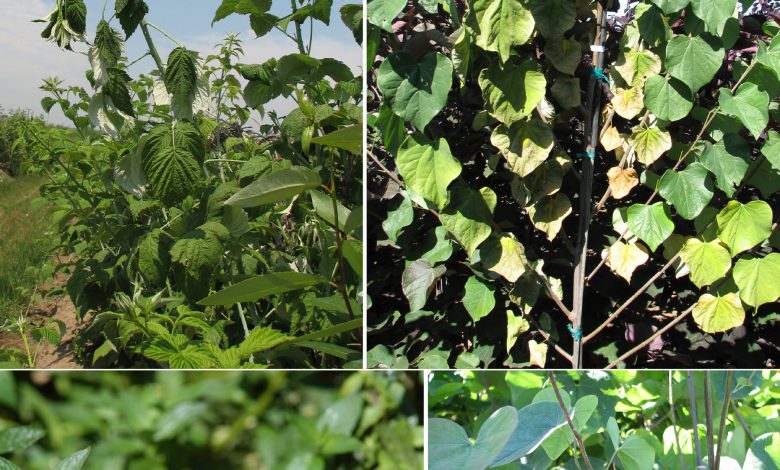
In this article you will learn how to identify verticillium wilt. You will also understand how this disease works, what crops it affects and how we can control or eliminate it.
As a gardener or horticulturist, you have probably heard of the benefits fungi have in soil or even added mycorrhizae to your soil. However, not all mushrooms are beneficial.
Verticillium wilt is a fungal disease that affects more than 400 species of plants, including trees and shrubs, vines, flowers, and vegetables. Some of our most appreciated plants, such as roses and tomatoes, are susceptible to being attacked by this disease.
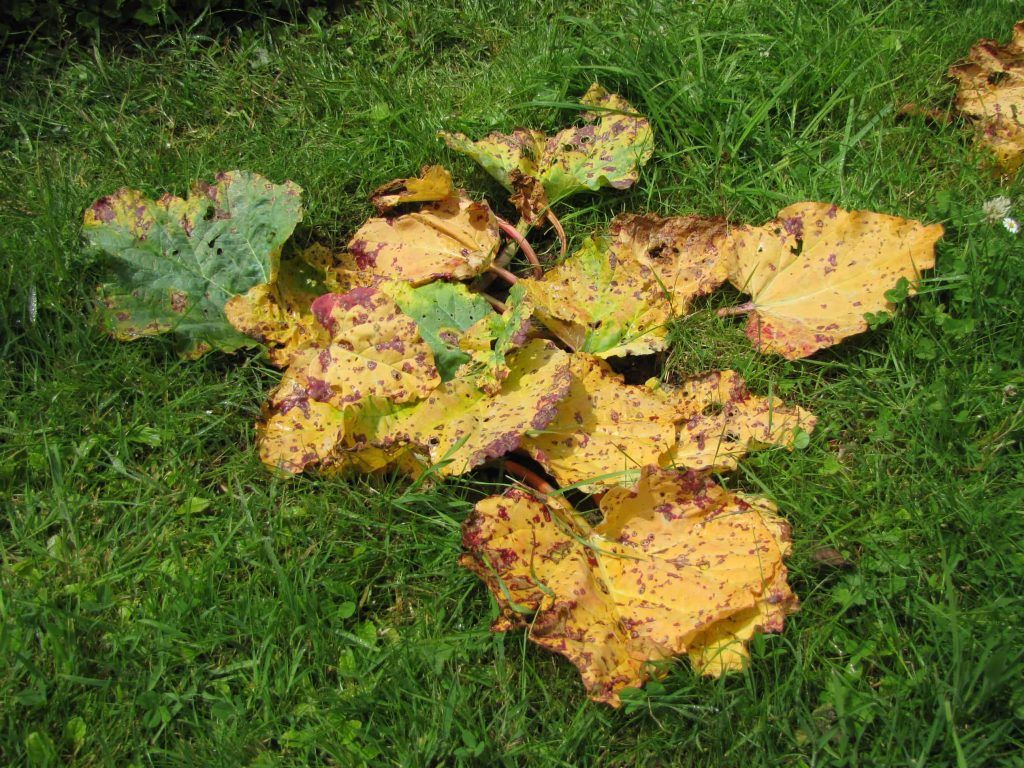
There are two types of this soil-borne fungus: Verticillium dahliae and Verticillium albo-atrum.
These fungi live in the xylem of plants, which are tiny tubes that help transport water and nutrients throughout the plant. Basically, they create a blockage in the vascular system of the plant and make it unable to receive enough water.
Some infected plants may wilt as a result. Verticillium wilt also produces toxins that damage host plants.
There are currently no treatments available for verticillium wilt, but there are many ways to prevent or control the disease.
If you know that verticillium wilt is a problem in your soil, start by selecting plant varieties that are resistant or immune to verticillium wilt.
Also, maintaining healthy plants and improving plant vigor can give them an edge.
What is verticillium wilt?
Verticillium or Verticillium wilt is a common soil fungus that thrives in temperate climates around the world and can be present in the soil for decades.
Verticillium wilt overwinters in the soil as dormant mycelium or tiny dormant black structures called microsclerotia, waiting for favorable conditions to return.
They enter damaged plant tissue through the roots and multiply. Many common weeds, such as dandelions and weeds, can be Verticillium host species.
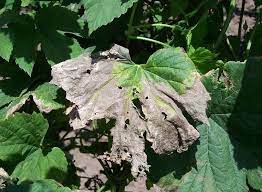
Verticillium wilt is a disease that affects more than 350 species of eudicolous plants. It is caused by six species of Verticillium fungi: Verticillium dahliae, Verticillium albo-atrum, Verticillium longisporum, Verticillium nubilum, Verticillium theobromae, and Verticillium tricorpus.
Many plants with significant economic weight are susceptible, such as cotton, tomatoes, potatoes, oilseed rape, aubergines, peppers, and ornamental plants, as well as others in natural vegetation communities.
Many species and cultivars of eudicots are resistant to the disease, and all monocots, gymnosperms, and ferns are immune.
How does verticillium wilt act?
Verticillium belongs to the Deuteromycetes class of fungi, for which no sexual reproductive system is known.
Instead, verticillium fungi have asexually reproducing spores called conidia.
The name verticillium derives from the Latin word «verticillus», which means «whorls», because these unicellular conidia are born from specialized hyphae that are arranged in the form of whorls.
The spores of the fungus infect the plant tissue and occupy the xylem vessels, where more conidia are produced. The conidia move throughout the plant’s vascular tissue system as the plant transports water, eventually causing the xylem to narrow.
This problem is similar to that of humans who have clogged arteries. As the xylem of plants becomes more clogged, the xylem will not be able to transport water and nutrients efficiently and the plant will wilt.
As the plant decays and dies, the Verticillium fungus will form structures called microsclerotia or masses of melanized hyphae in the dying plant tissue. These small black dots are usually visible with a hand lens.
Microsclerotia are released into the soil through decomposition of the original host plant and contain conidia that can infect other plants through the plant’s root system and can even exist on the root surface of resistant plants, primed for infection. infect neighboring non-resistant plants.
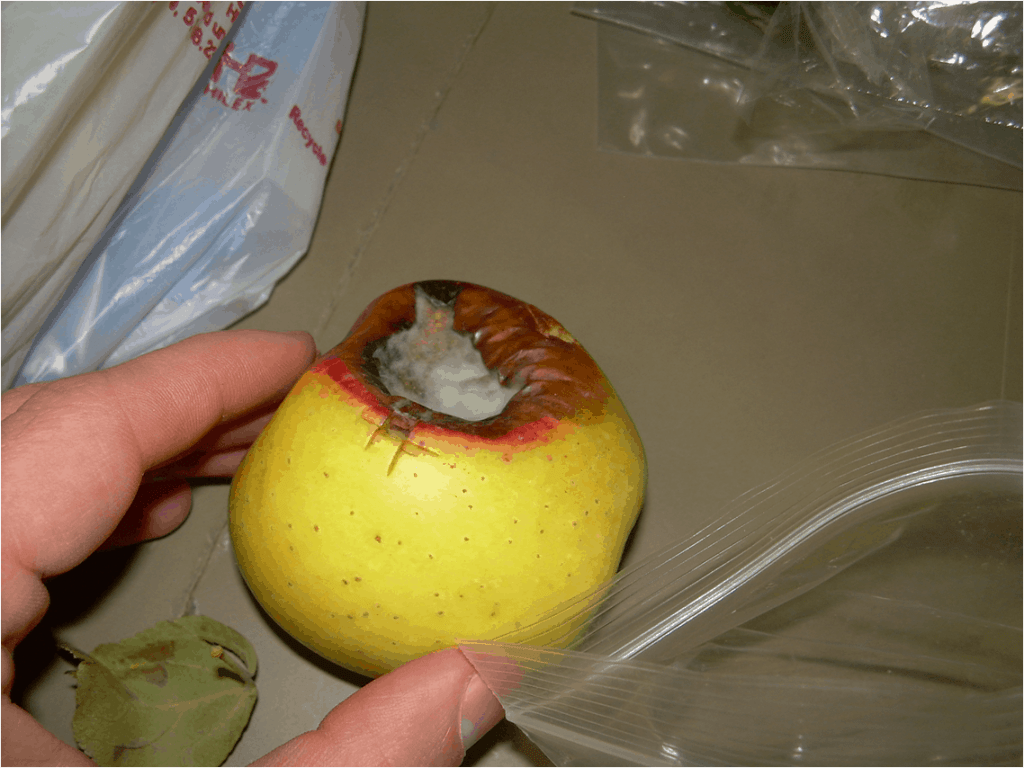
Take care to disinfect garden tools
The pathogen can spread through contaminated soil or infected roots. This disease can also be transmitted through pruning tools, so disinfecting tools between plants is very important.
Plants that already suffer root damage, for example from nematodes, are more susceptible to verticillium wilt.
What symptoms do plants show with verticillium wilt?
Plants often show very similar stress symptoms, so it can be confusing to correctly identify the cause of the stress.
Verticillium wilt symptoms can also manifest in different ways despite the name of this plant pathogen.
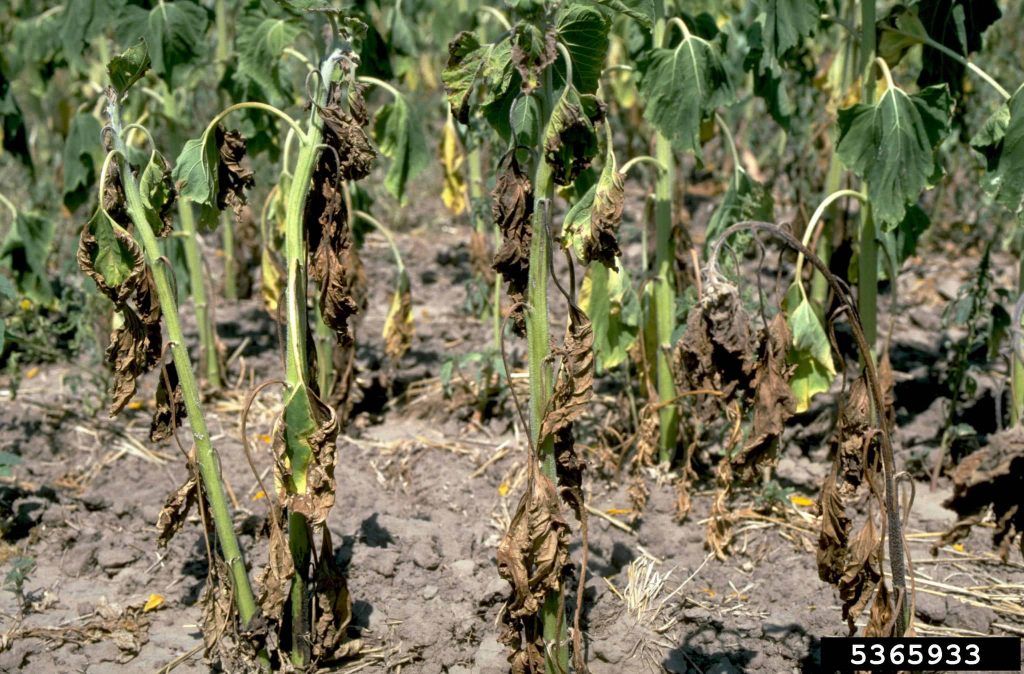
Acute or chronic problem
In many trees, Verticillium wilt can be an acute or chronic problem.
In acute infection, which occurs on new wood or sapwood, branches may suddenly show yellow leaves, drop leaves, and die.
When the fungus lives on older wood, the tree may show chronic disease by developing smaller leaves, leaves turning yellow at the edges, and a decrease in overall plant vigor.
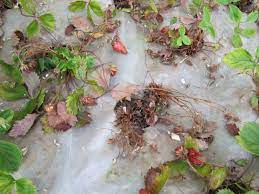
Verticillium-infected trees may not die immediately, but may undergo a slow decline.
On fruit-bearing plants, such as strawberries and tomatoes, you may see leaves with reddish-brown edges that curl and fall off prematurely. In the case of strawberry plants, the entire crown may die.
This disease spreads from the bottom of the plant up. New leaves may be yellow and stunted.
On tomatoes, yellow spots are first observed on the lower leaves. The leaves may turn brown, but the stems usually do not, unlike fusarium wilt.
How can we control this disease?
Although there is no treatment for verticillium wilt, there are several effective mitigation practices including soil remediation, crop rotation, and selection of resistant cultivars.
Proper pruning, watering, and fertilization can also help maintain the plant’s overall health and vigor and better prepare it to fight disease.
Verticillium wilt control
Avoid planting susceptible plants in areas with known verticillium inoculations.
If you suspect your plants have verticillium wilt, cut off the infected plant tissue and make sure you don’t put them in their regular compost to reduce the spread of future fungal diseases.
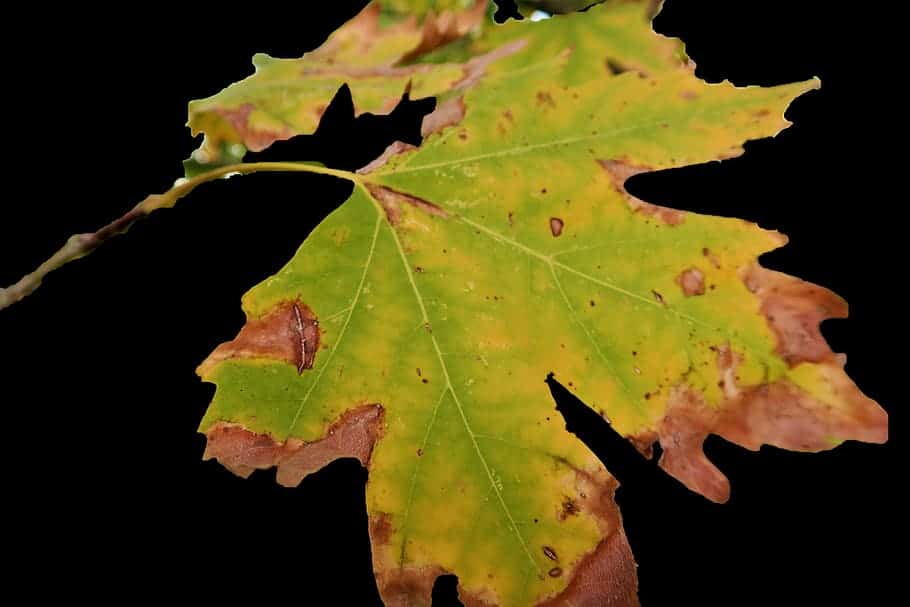
Practicing crop rotation with resistant plants can also help disrupt the life cycle of the fungus.
A study published in the Journal of General Plant Pathology showed a promising trial of rotating broccoli after eggplants to suppress the presence of V. dahliae in the soil, as eggplant is one of the susceptible species.
Also, the University of California Davis published a guide on soil solarization. It describes how soil solarization in hot climates can help control fungi and weeds, especially in combination with the use of crop residues from mustard, broccoli, and other cruciferous crops.
Commercial farms can use soil fumigation with high concentrations of metam-sodium or methyl bromide to eradicate the fungus, but this is not a method used by hobby gardeners or horticulturists and is an expensive and toxic control.
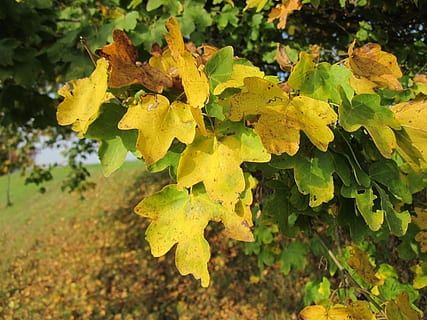
How can we prevent verticillium wilt?
We must grow resistant crops and disease-free plants whenever possible.
For example, some types of readily available hardy tomatoes are Better Boy, Big Girl, Rutgers 39, and others. They are indicated with the letter “V” to show resistance to verticillium wilt.
As for some varieties of strawberries, Camino Real, Petaluma, Albion and San Andreas are cultivars more tolerant to verticillium. Check with your garden center or seed supplier to see which cultivars are resistant to verticillium fungus.
How can I tell if I have verticillium wilt?
It is very difficult to know if a plant is affected by verticillium wilt specifically because the symptoms are so similar to many other plant diseases and deficiencies.
How is verticillium wilt removed from the soil?
Verticillium wilt can live in the soil for a long time.
Commercial farms may use chemicals to fumigate the soil.
The hobby horticulturist can attempt to control the verticillium population through crop rotation, soil solarization and general sanitation, and removal of infected plants.
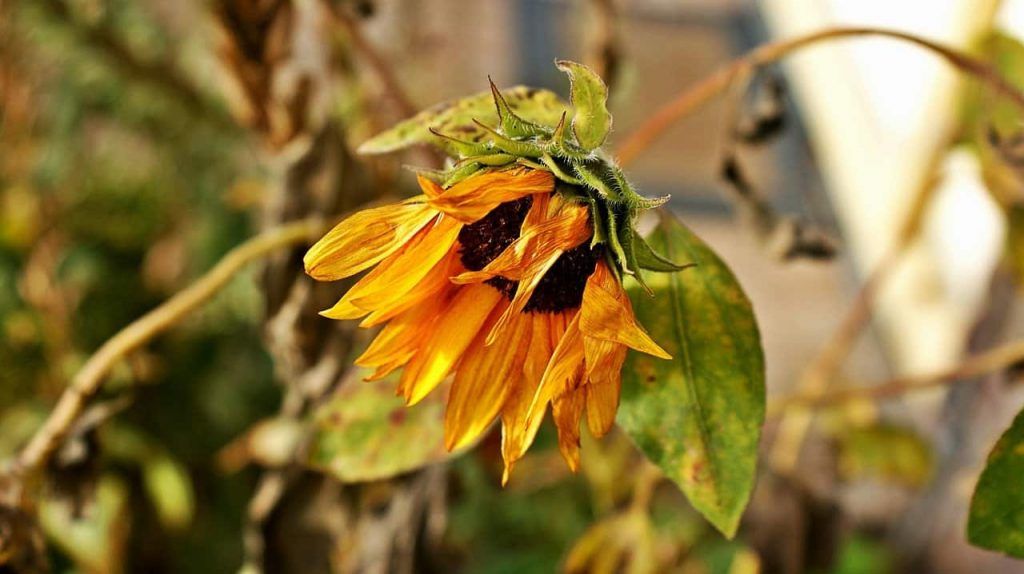
What plants are affected by verticillium wilt?
More than 400 plant species are affected by verticillium wilt.
Many of the susceptible crops are garden favorites such as rose, watermelon, tomato or strawberry, or cash crops such as cotton or maple.
- Abelmoschus esculentus (also known as Hibiscus esculentus) (Okra)
- Abutilon spp. (Abutilon)
- Acer spp. (Maple)
- Acer negundo (Elderberry)
- Aconitum (wolfsbane)
- Aesculus hippocastanum (Horse Chestnut)
- Aesculus glabra (Ohio Buckeye)
- Ailanthus altissima (tree of heaven)
- Albizia (Mimosa)
- Amaranthus retroflexus (Marsh grass)
- Antirrhinum majus (Dragon)
- Arabidopsis thaliana (Sea Cress)
- Arachis hypogaea (Peanut)
- Aralia cordata (Udo)
- Aralia racemosa (American tuberose)
- Armoracia lapathifolia (Horseradish)
- Aster spp. (Asters)
- Atropa belladonna (Belladonna)
- Aucuba (Aucuba)
- Berberis (Barberry)
- Brassica napus (Rape, Rapeseed)
- Brassica napobrassica (Kohlrabi, Rapeseed)
- Brassica oleracea var. botrytis (Cauliflower) Brassica oleracea var. capitata (Cabbage)
- Brassica oleracea var. gemmifera (Brussels sprouts)
- Buxus (Boxwood, boxwood)
- Calceolaria spp. Callirhoe papaver (Poppy)
- Callistephus chinensis (Chinese Asters)
- Camellia (Camellia)
- Campanula spp. (Bell)
- Campsis radicans (Trumpet creeper)
- Cannabis sativa (hemp, marijuana)
- Capsicum spp. (Pepper)
- Carpobrotus edulis (Ice Plant)
- Carthamus tinctorius (Safflower)
- Carya illinoensis (Pecan)
- Catalpa speciosa (Northern Catalpa)
- Catalpa bignonioides (Southern Catalpa)
- Celosia argentea (cock’s comb)
- Centaurea cyanus (cornflower, bachelor’s button)
- Centaurea imperialis (Sweet Sultan)Ceratonia siliqua (Carob tree)
- Cercis canadensis (Redbud)
- Cercis siliquastrum (Judas Tree)
- Chenopodium (Goosefoot)
- (#) Chrysanthemum spp. (Chrysanthemum, Daisy, etc.)
- Chrysanthemum leucanthemum (ox-eye daisy)
- Cinnamomum camphora (Camphor Tree)
- Cistus palhinhai (Cistus)
- Cistus x purpureus (orchid rockrose)
- Citrullus vulgaris (Watermelon)
- Cladrastis lutea (Yellowwood)
- Clarkia elegans (Clarkia)Coreopsis lanceolata (Tickseed)
- Cotinus coggygria (Smoke Tree)
- Cupaniopsis anacardioides (Carrotwood)
- Cucumis melo (Honeydew, Cantaloupe and other melons)
- Cucumis sativus (Cucumber)
- Cucurbita pepo (Pumpkin)
- Cydonia oblonga (Quince)
- Cynara cardunculus (Artichoke)
- Dahlia variabilis (Dahlia)
- Delphinium ajacis (Larkspur)
- Digitalis purpurea (foxglove)
- Dimorphotheca sinuata (Cape Marigold)
- Diospyros virginiana (persimmon)
- Dodonaea viscosa (Hops)
- Echinacea purpurea (Eastern Purple Coneflower)
- Elaeagnus (Oleaster, Russian olive)
- Erica spp. (Heather)
- Erigeron (Fleabane)
- Eschscholzia californica (California Poppy)
- Ficus benjamina (weeping fig tree)
- Ficus retusa (Laurel of India)
- Fragaria chiloensis (Strawberry)
- Fraxinus pennsylvanica (Ash)
- Fremontodendron spp. (Flannel bush, Fremontia)
- Fuchsia spp. (Fuchsia)
- Gerbera jamesonii (Transvaal daisy)
- Gossypium spp. (Cotton)
- Gymnocladus dioicus (Kentucky Coffee)
- Hebe bollonsii (Hebe)
- Hebe x carnea ‘Carnea’ (Hebe)
- Hebe lewisii (Hebe)
- Hedera (Ivy)
- Helianthus spp. (Sunflower)
- Helichrysum bracteatum (Straw Flower)
- Heliotropium arborescens (Heliotrope)
- Humulus (Hops)
- Impatiens balsamina (Garden Balsam)
- Impatiens walleriana (Busy Lizzie)
- Jasminum (Jasmine)
- Juglans regia (English Walnut)
- Koelreuteria paniculata (golden shower tree)
- Lampranthus spectabilis (Ice Plant)
- Lathyrus odoratus (sweet pea)
- Liatris spp.
- Ligustrum spp. (Privet)
- Linum usitatissimum (Flax)
- Liriodendron tulipifera (Tulip)
- Lobelia erinus (Lobelia)
- Lonicera (Honeysuckle)
- Lupinus polyphyllus (Lupine)
- (#) Lycopersicon esculentum (Tomato)
- Maclura pomifera (Osage Orange)
- Magnolia (Magnolia)
- Matthiola incana (Stock)
- Melia azedarach (China Berry, Persian Lilac)
- Mentha spp. (Mint)
- Monarda fistulosa (Wild Bergamot)
- Nandina domestica (Heavenly Bamboo)
- Nicotiana benthamiana (Australian tobacco)
- Nyssa sylvatica (black gum)
- Olea europaea (Olive)
- Osteospermum (African daisy)
- Paeonia spp. (Peony)
- Panax quinquefolius (American ginseng)
- Papaver orientale (Oriental Poppy)
- Parthenium argentatum (Guayule)
- Parthenocissus (Virginia Creeper)
- Pelargonium spp. (Pelargonium, Geranium)
- Persea americana (Avocado)
- Petunia (Petunia)
- Pistachio (Pistachio)
- Phlox spp. (phlox)
- Phellodendron (Cork oak)
- Physalis alkekengi (Chinese Lantern Plant)
- Polemonium spp. (polemonium)
- Populus tremula (Aspen)
- Prunus (Cherry, Plum, Peach, Almond, other stone fruits)
- Pyrola spp. (Pyrola)
- Quercus palustris (Pine Oak)
- Quercus rubra (Red oak)
- Raphanus sativus (Radish)
- Reseda odorata (Mignonette)
- Rhaphiolepis (Indian Hawthorn, Yeddo Hawthorn)
- Rheum rhaponticum (Rhubarb)
- Rhododendron (Azalea, Rhododendron)
- Rhus (Sumac, Lemon Berry)
- Ribes (gooseberry, black, white, red currant and others)
- Ricinus communis (Castor bean)
- Robinia pseudoacacia (Black locust)
- Romneya coulteri (Poppy)
- Rorippa islandica (swamp cress)
- Pink rose)
- Rosmarinus officinalis (Rosemary)
- Rubus (black berries, broom berries, dew berries and others)
- Rudbeckia serotinia (Black-eyed Susan)
- Salpiglossis sinuata (Painted Tongue)
- Salvia farinacea (Flour Cup Sage)
- Salvia haematodes (Salvia)
- Salvia azurea (Blue sage)
- Sambucus spp. (Elder)
- Sassafras albidum (Sassafras)
- Schinus (Pepper Tree)
- Schizanthus pinnatus (Butterfly Flower)
- Senecio cruentus (Cineraria).
- Sisymbrium irio (London arugula).
- Solanum aethiopicum (Ethiopian Eggplant).
- Solanum carolinense (Carolina Woodpecker).
- Solanum elaeagnifolium (White Marigold).
- Solanum melongena (Eggplant).
- Solanum nigrum (Nightshade).
- Solanum sarrachoides (Belladonna)Solanum tuberosum (Potato).
- Sorbus torminalis (Wild Tree).
- Spinacia oleracea (Spinach).
- Spirea (Queen of the meadows, Spirea).
- Styphnolobium (Japanese pagoda tree).
- Syringa (Lilac)Taraxacum officinale (Dandelion).
- (*) Tilia (Lime, Tila).
- Trachelospermum jasminoides (Starry Jasmine).
- Tragopogon porrifolius (Salsify).
- American Ulmus (American Elm).
- Ulmus procera (English elm).
- Ulmus rubra (Slippery Elm).
- Venidium spp. (Namaqualand daisy).
- Viburnum spp. (Viburnum, road tree).
- Vigna sesquipedalis (yard bean).
- Vigna sinensis (Cow Pea).
- Vitis (Vine).
- Weigela (Weigela).
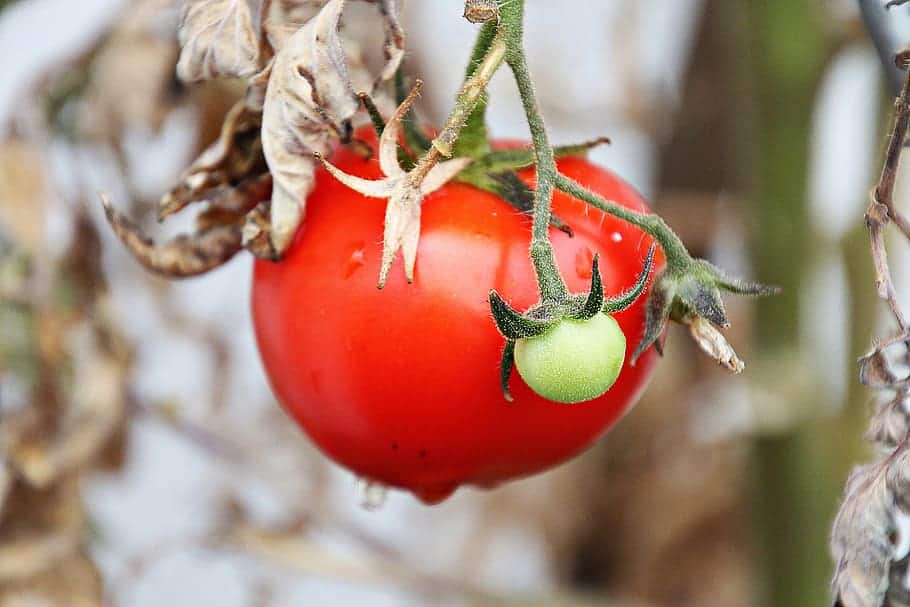
Importance of verticillium wilt in agriculture
Verticillium wilt occurs in a wide range of trees and plants.
In general, it reduces the quality and quantity of a crop by causing tissue discoloration, growth retardation, and premature defoliation and death.
Stock from infested nurseries may be restricted. Once a plant is infected, there is no way to cure it.
Verticillium wilt is of particular concern in temperate and irrigated areas. Verticillium spp. it can occur naturally in forest soils and when these soils are cultivated, the pathogen will infect the crop.
The Salinas Valley in California has had severe problems with Verticillium wilt since 1995, probably due to flooding in the winter of 1995. Lettuce cannot be grown in many areas of the Salinas and Pajaro Valleys due to high levels of Verticillium dahlias on the ground.
Potatoes grown on Verticillium-infested soil can have a 30-50% reduced yield compared to potatoes grown on «clean» soil.

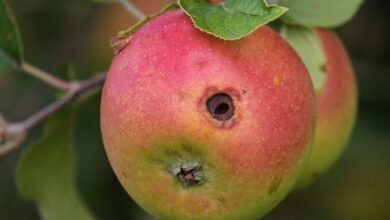
![Photo of Chrysanthemums in your Garden: [Planting, Care, Irrigation, Substrate]](https://www.complete-gardening.com/wp-content/uploads/2022/08/chrysanthemums-in-your-garden-planting-care-irrigation-substrate-390x220.jpg)
![Photo of Zahareña: [Cultivation, Care, Pests and Diseases]](https://www.complete-gardening.com/wp-content/uploads/2022/08/zaharena-cultivation-care-pests-and-diseases-390x220.jpg)
![Photo of Fertilizers for the Garden: [The 10 Best Types You Can Use]](https://www.complete-gardening.com/wp-content/uploads/2022/08/fertilizers-for-the-garden-the-10-best-types-you-can-use-390x220.jpg)